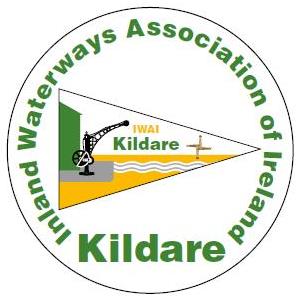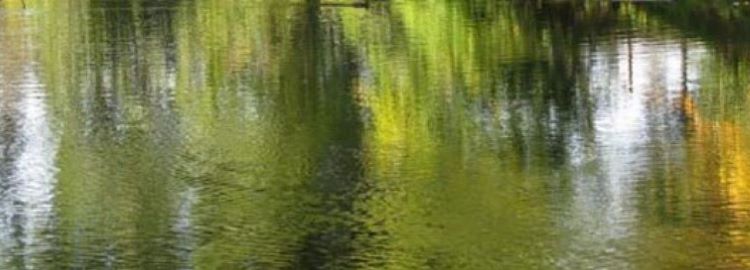This a synopsis of the rich history of places located along the Grand Canal Main Line from Gollierstown to Ticknevin, derived from various sources, including the Grand Canal Guide. Others have documented on-line the history in more detail. In particular, our researchers recommend Irish waterways history and Kildare e history
Gollierstown Bridge, Stacumney, Hazelhatch, Aylmer’s Bridge
| The canal builders cut through limestone along the section from Lock 12 and used the cut stone from the adjacent quarries to build locks and bridges. Stacumney was originally the site of one of Omer’s houses and stone yard. |
| Hazelhatch is a quiet residential district in County Dublin on the border with Kildare, noted mainly for its mooring area on the Grand Canal, with a waterside pub and within walking distance of a railway station. |
| Hazelhatch to Ardclough is a popular walk with local residents. Past Aylmer’s Bridge, the high wall of the Lyons estate follows the towpath. |
| Lock 13, Lyons Hill, Lyons House and Village, Henry Bridge, Oughterard, Ardclough |
| Lock 13 was originally designed by Thomas Omer to be 20ft wide, John Trail redesigned it, when he took over as engineer, to be 14ft wide. You can still see part of the old lock in the upper chamber. |
| The lock is located near Cnoch Liamhna (Lyons Hill) the inauguration site for the Uí Dúnchada, kings of Leinster on and off, a thousand years ago. |
| Nicholas Lawless, the banker, built Lyons House in the late 1700s. His son Valentine was chair of the Grand Canal Company and built the Lyons Mill (later owned by the Shackletons) and the lockyard complex. The house remained in the Lawless family until the 1920s. Tony Ryan acquired it in 1996 and extensively restored and renovated the house and grounds. |
| The Village is on the site of the old industrial buildings and houses, originally part of the yard at the lock and built in the early 1800s and employing 100 people. Lydia Shackleton, who became the first resident artist at the Glasnevin Botanical Gardens in 1884, lived in the village for a time. Today there is a café and restaurant, an ideal location to moor up to enjoy the ambience and explore the past. |
| Tipperstown at Henry Bridge was where the Tipper family had two castles, which burnt during the 1641 Rebellion. You can still see the ruin of the Reeves Tower House. |
| Oughterard (the upper height) is a complex of medieval ecclesiastical ruins and graves on the site of a convent going back to the 600s. There are several graves of note, the most famous being Arthur Guinness who was interred here in 1803. Follow the road south and uphill from Henry Bridge and you will come to it, a must when stopping at Ardclough. There are details on how to find it on the Irish Waterways History site. |
| Ardclough (high stone) known in racing circles for “the four horses of the Ardcloughalypse”, is home to several famous studs and quite a few successful jockeys. Ardclough was once a busy place because of the nearby Boston Quarry but the quay is now overgrown. Cargo traffic along this stretch peaked in 1865 with a total of over 379,000 tons and an average of 90 barges a day passed through here. |
| Ponsonby and Devonshire Bridges, Locks 14 and 15, River Morrell, Sallins |
| The boatmen referred to Ponsonby as the Eleven Mile Bridge reputedly, as it was 11 Irish miles from James Street Harbour. |
| Between the Devonshire Bridge and Lock 14 is a feeder from the River Morrell – the feeder parallels the canal on the south side from above Lock 15. In the early days of the canal and for over 90 years until 1869, the Morrell was the principal source of drinking water for the people of Dublin. Behind Lock 14 on the northern bank is a conference centre and across the canal is the Killeen Golf course. |
| Horses towed the first passenger boats to Sallins in 1779. Passenger traffic started to fall away after a high of over 120,000 in 1846. This decline continued after the opening of the Dublin to Cork railway line and then the Dublin to Galway line in 1850 until the canal was closed to all passengers in 1852. During the canal transportation years, the small harbour was busy with canal boats loading and unloading for Odlums Mill. There was a Canal Hotel built in Sallins that was not a success and when it closed, it was used for other enterprises including a fish-processing factory and a meat plant before being demolished in the 1970s. Close by is a very old mass concrete building, once a sugar processing plant and now a ruin. The nearby station was the scene of the Sallins Train Robbery in March 1976, when about IR£200,000 was stolen from the Cork to Dublin mail train. Sallins suffered serious flood damage in November 2009 and the work carried out since to the south and on the canal east of Sallins is to alleviate flooding in the future. About 9 km north of Sallins, on the R403 near Straffan, is the Straffan Butterfly Farm |
| Heading west along the track, at the bend, is the entrance to the original planned line of the canal on the north side and the entrance to the filled-in Sallins Dry Dock along the bank on the south. |
Soldier’s Island, The Pots, Digby Bridge, Lock 16, Landestown Bridge, Lock 17, Landestown House, Lock 18
|
| Soldier’s Island is at the entrance to the Naas Branch. It may have got its name because at one time there was a sentry here to watch over passing cargo boats and prevent looting. |
| The Leinster Aqueduct (1783) takes the canal over the Liffey. Climb down to the Liffey level and walk along the path beside the river, to really appreciate this piece of engineering. The Liffey rises 24 km from Dublin however, it meanders for 147 km before reaching Dublin and at this point, it is flowing north. There is a pumping station here that takes the water from the river to the canal. |
| On the northern side of the canal before you reach Digby Bridge are four circular basins, known as the Pots, built as an overflow and unique in Ireland. The Kildare Branch has regular clean-up work parties to keep this site pristine.The Helpful Engineer has a description of how this unique system on the Grand Canal works – see Four Pots. |
| The Digby family commissioned the building of Landestown House, a Palladian mansion, in 1740; Simon Digby was one of the directors of the Grand Canal Company. |
| Donadea Forest Walk, north of Prosperous is well worth a visit by bicycle or car if you would like to stretch your legs before returning to the boat and heading towards Robertstown or mooring up along this stretch for the night. To get to Donadea, take the road just before Lock 18 and head towards Prosperous. At the crossroads, keep heading north, after about 8 km, you will come to Donadea Forest Park and its Aylmer Trail. |
| Burgh/Cock Bridge, Bonynge /Healy’s Bridge, Blackwood, Bog of Moods, Robertstown, Binns Bridge, Lock 19, Lowtown |
| You are now on the summit of the canal for the next 9 km, take some time to watch the life in the water as on this stretch the water is really clear. |
| Beyond Cock Bridge you enter a wooded area, another of those places that make a pleasant mooring spot for the night with a rope hung around a tree. |
| Once through the next bridge the land changes as you are approaching the flatlands. Off to the right is the old entrance to the Blackwood Feeder. Ballynafagh Lake also known as the Blackwood Reservoir can be reached from Prosperous. Access to it has been improved with paths all around the lake. |
| Robertstown with its background of the old Grand Canal Hotel stands out as you approach it across the Bog of Moods from the east. Robertstown may have been named after one of the Fitzgeralds, who were known as the Lords of Allen. The village provided accommodation for the workers on the canal when built in 1785. In the 1960s and 1970s, Robertstown led the reawakening of interest in the canals as a leisure amenity with its annual Grand Canal Festa and Banqueting Season. |
| In 1810, the hotel opened and within five years was extended due to demand. However, with the demise of canal passenger traffic in 1853, the hotel stopped trading. It has had several lives since, as an RIC barracks, a hostel for Bord na Mona turf cutters, a community centre and for a while a multi-purpose local and tourist amenity. Old pictures from the 1950s show the hotel with the thatched cottage on the opposite bank, still there today, and cargo boats moored for the night or passing through on their way to the transhipment yard at Lowtown. Boaters today stop here to avail of the local hospitality and to stock up on provisions before heading east or west. |
| At the western end of the summit level is Lowtown, the highest point on the Main Line of the Grand Canal and where the Barrow Line converges with the Main Line. Once through Lock 19 you come to the historic Grand Canal Transit Yard where the old barges unloaded and loaded their cargoes. Today these ‘crossroads’ are a very popular mooring spot for all types of craft both on public and private moorings and well worth a walk around. There are boat facilities at Lowtown including a pump-out and water. |
| Allenwood, Shee Bridge, Lullymore, Hamilton Bridge, Hartley Bridge, Ticknevin, Lock 20 |
| Heading east, the canal goes over the Slate River, popular with anglers, and on past Allenwood. |
| An important development of the canal age was the introduction of the skew bridge by William Chapman in 1808 on the Naas Branch. A skew bridge is not at right angles, so the beds of the arch are not directly opposite each other, but are slightly staggered along the line of the canal. Shee Bridge is the only one left on the Grand Canal as the three on the Naas Line were rebuilt to give more headroom. |
| On the south side of the canal just past the Shee Bridge is the Millenium Park with jetties and picnic tables, an ideal spot for lunch or to moor up and go exploring. |
| Lullymore Heritage & Discovery Park, a venue of interest to all the family is located on the R414 about 7 km southwest of Allenwood. This is another opportunity to use the bicycle. |
| The Bord na Mona Lifting Bridge is not in use. |
| The stretch of canal around Hamilton Bridge is another very popular spot with local anglers. |
| Past Hartley Bridge you come to the Lock 20 in Ticknevin, the first drop heading for the Shannon and the beginning of a lock free stretch of 30 km across the bogs. The entrance to the Edenderry Line is 5 km away.EOL 2013 |



















